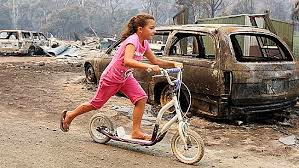Robert Letterman-Reading Summary 9
Reference
Maron, D. F. (2013, June 7). How Social Media is Changing Disaster Response. Scientific American.
Theme
There a benefits and risks to social media tools that can be used during emergencies.
Summary
· At the time of Hurricane Katrina, Iphones did not exist, nor did Twitter.
· During Hurricane Sandy these social media sites played a major role as cell phone usage was limited in the affected areas. Twitter and Facebook were used to locate loved ones.
· "The convergence of social networks and mobile has thrown the old response playbook out the window," Michael Beckerman, president and CEO of the Internet Association.
· During Hurricane Sandy, "users sent more than 20 million Sandy-related Twitter posts, or "tweets," despite the loss of cell phone service during the peak of the storm"
· The Boston Marathon bombing also saw tremendous activity on Facebook and Twitter. The Boston Police Department tweeted: "CAPTURED" when it concluded the manhunt. It was re-tweeted 140,000 times.
· Google docs were also used to spread the word to those affected of available shelter, food, and hot showers because of the road closures.
· A danger that these sites can pose is that some people can mistakenly spread mis-information about emergency incidents.
· "Tweets flow so quickly it's like a fire hose where you're trying to extract bits of information that are relevant"
· Users of these sites must also be aware that scammers use social media sites to solicit money posing as victims of a disaster.
Application
I think it is critical for emergency management personnel and public information officers to become highly skilled in the use of these social media sites. Not only can we use them to relay critical information to the public and victims. We must be able to navigate these sites so that we can correct any potential misinformation of an incident.
